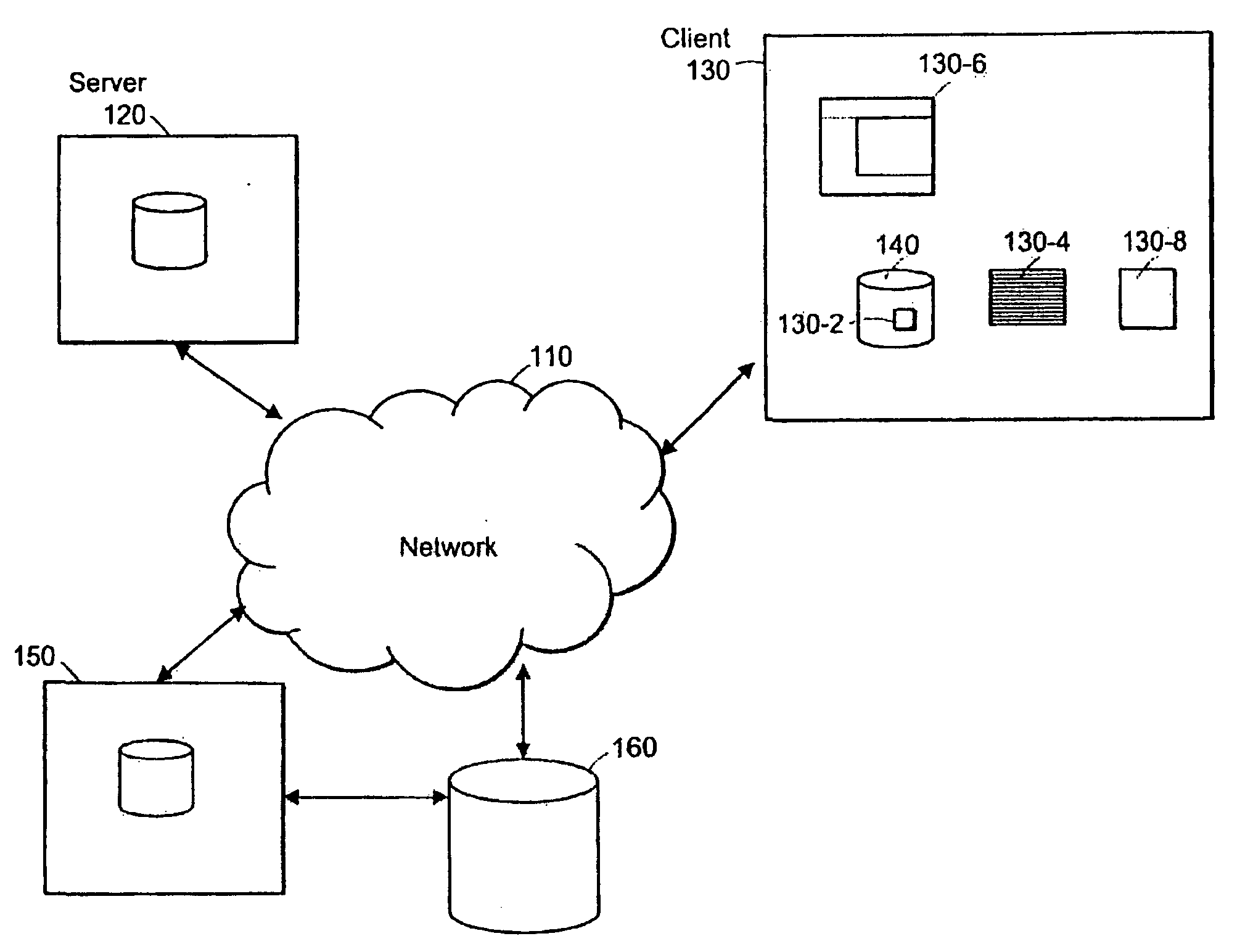Interactions for electronic learning system
a learning system and interaction technology, applied in the field of interaction for electronic learning system, can solve the problems of inability to meet user needs, inconvenient maintenance, etc., and achieve the effect of improving user experience, smooth presentation, and enhancing user viewing experien
- Summary
- Abstract
- Description
- Claims
- Application Information
AI Technical Summary
Benefits of technology
Problems solved by technology
Method used
Image
Examples
Embodiment Construction
FIG. 1 is a block diagram of the computer system architecture according to an embodiment of the invention. An interactive presentation is distributed over a network 110. The interactive presentation enables management of both hardware and software components over the network 110 using Internet technology. The network 110 includes at least one server 120, and at least one client system 130. The client system 130 can connect to the network 110 with any type of network interface, such as a modem, network interface card (NIC), wireless connection, etc. The network 110 can be any type of network topology, such as Internet or Intranet.
According to a certain embodiment of the invention, the network 110 supports the World Wide Web (WWW), which is an Internet technology that is layered on top of the basic Transmission Control Protocol Internet Protocol (TCP / IP) services. The client system 130 supports TCP / IP. The client system 130 includes a web browser for accessing and displaying the inte...
PUM
 Login to View More
Login to View More Abstract
Description
Claims
Application Information
 Login to View More
Login to View More - R&D
- Intellectual Property
- Life Sciences
- Materials
- Tech Scout
- Unparalleled Data Quality
- Higher Quality Content
- 60% Fewer Hallucinations
Browse by: Latest US Patents, China's latest patents, Technical Efficacy Thesaurus, Application Domain, Technology Topic, Popular Technical Reports.
© 2025 PatSnap. All rights reserved.Legal|Privacy policy|Modern Slavery Act Transparency Statement|Sitemap|About US| Contact US: help@patsnap.com



